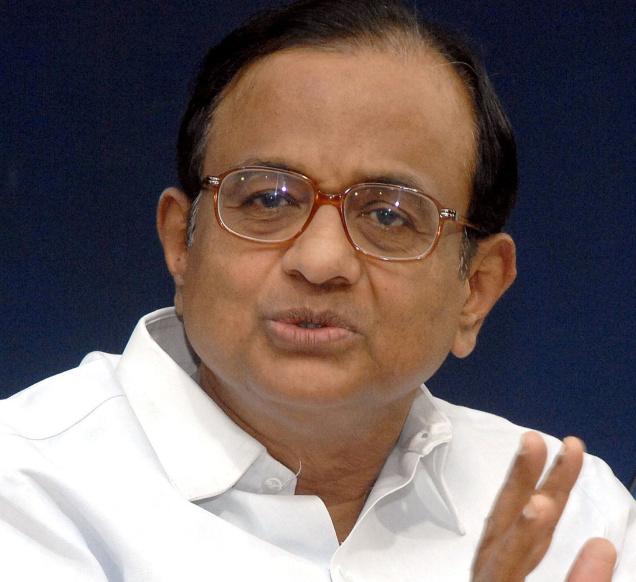Former finance minister P Chidambaram did a smart thing before the last Lok Sabha elections—he decided not to contest. His son Karti Chidambaram contested instead of him, in the Sivaganga constituency in Tamil Nadu. The junior Chidambaram got around 1.04 lakh votes in a five cornered contest and lost his deposit, having not managed to secure more than one-sixth of the votes polled.
Unlike other Congress leaders, the senior Chidambaram has managed to keep himself partly busy, by writing a Sunday column for The Indian Express. In this column, the former finance minister, tries to tell us every week how the ten year rule of the Congress led United Progressive Alliance (UPA) had been good for the country and how the economy has been in trouble since the Narendra Modi government took over.
The latest column is along similar lines. In this column Chidambaram tries telling us that the Congress led UPA government had left the country in a good shape and the Narendra Modi government has screwed up things, since taking over in May last year.
As Chidambaram writes: “Let us look at the hard data that would be relevant to ‘development’ and ‘jobs’. There are more red lights than green. Yet the GDP(Gross Domestic Product) is estimated to have grown at 7.4 per cent in 2014-15, although the RBI has warned of a downward revision.”
Long story short—Chidambaram seems to believe that the GDP may not have grown by 7.4% between April 1, 2014 and March 31, 2015. And honestly, he may be right about it.
The ministry of statistics and programme implementation released the Gross Domestic Product(GDP) number for 2014-2015 on February 9, 2015. A new method was used to calculate the GDP and as per this method, the GDP growth in the financial year 2014-2015 would come in at 7.4%. This was significantly higher than the 5.5% growth that had been forecast by the Reserve Bank of India, earlier.
The trouble is that the real numbers don’t show this economic growth. Car sales grew by a minuscule 3.9% in 2014-2015. Exports contracted by 1.23%. The total indirect tax collections at Rs 5,46,479 crore were 12.5% lower than the original target of Rs 6,24,902 crore. When it comes lending by banks, it grew by 8.6% between March 21, 2014 and March 20, 2015. In comparison, it had grown by 14% between March 22, 2013 and March 21, 2014.
The Economic Survey released by the ministry of finance today towards the end of February 2015 stated: “The stock of stalled projects at the end of December 2014 stood at Rs 8.8 lakh crore or 7 per cent of GDP.” Further, corporate profitability was dull as well in the latter half of the financial year (October 2014 to March 2015).
It is worth remembering that the numbers highlighted above are real numbers, unlike the GDP which is a theoretical construct. The real numbers make it difficult to believe that the economy grew by 7.4% in 2014-2015. And given that Chidambaram is right in saying what he has in his column. Or so it seems.
The interesting bit comes next, where Chidambaram writes: “I predicted that the economy will revive in 2013-14. It did, and when the UPA passed on the baton to the NDA in May 2014, the GDP had recorded a growth rate of 6.9 per cent in 2013-14.”
So, Chidambaram is basically saying that in 2013-2014, when the Congress led UPA government was in power, all was well. The economy grew by 6.9% and the Congress led UPA passed on a healthy economy to the Narendra Modi government.
Now what is wrong with this argument? Several things. First, you don’t need a PhD in Economics (or an MBA from Harvard, which Chidambaram has), to tell you that 7.4% economic growth (which happened in 2014-2015) is higher than the 6.9% economic growth (which happened in 2013-2014).
Secondly, what Chidambaram does not tell us is that the 6.9% number is also a revised number, which has been calculated as per the new GDP method released by the ministry of statistics and programme implementation. The economic growth as per the old method had been at 5%.
So the point is that Chidambaram does not believe the 7.4% economic growth number as per the new model. But he believes the 6.9% economic growth number which is also as per the new model. And therein lies his double standard.
If he believes in the 6.9% number then he has to believe in the 7.4% number as well because the method involved in calculating them is the same. And that being the case, 7.4% is higher than 6.9%.
(Vivek Kaul is the author of the Easy Money trilogy. He tweets @kaul_vivek)
The column originally appeared on Firstpost on May 25, 2015



